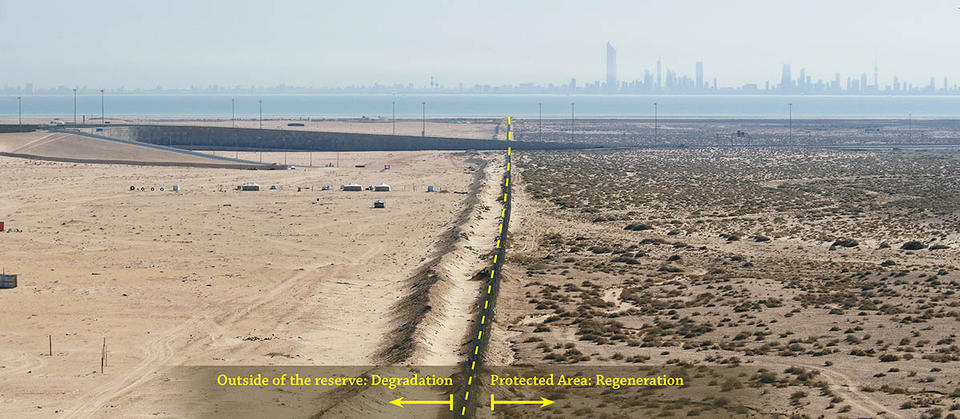Birds have figured as important indicators for the legislative protection of official protected areas. Many protected areas throughout the world have been first identified as “Important Bird Areas” (IBAs). In 1994, BirdLife International’s inventory of “Important Bird Areas in the Middle East” showed that some areas in Kuwait are extremely valuable at the international level for bird conservation. This inventory included eight sites in Kuwait; although at the time there was even greater scarcity of ornithological information than presently, and this led to a bias towards including better explored areas. The designations and delineations of Important Bird Areas need to be updated. Remarkably important sites such as Bubiyan were not included in the initial survey of IBAs due to lack of information. But nonetheless the initial IBA list, along with other recent initiatives shows that certain areas are already scientifically assessed as being of outstanding global importance for conservation. Therefore we make the following recommendations:
- A re-assessment, identification and delineation of Important Bird Areas is needed in Kuwait. The last IBA survey was in 1994, therefore a review is long overdue because available information at the time was scant.
- A hierarchical network of protected areas should be organized and protection strategies prioritized accordingly. Also steps must be taken to designate and protect yet more sites of local importance – even very small protected areas, such as ponds and agricultural land, are critically important for migratory birds.
- International conventions must be used to designate and promote the global importance of Kuwait’s natural environment for wildlife. An obvious example concerns two potential designations as protected Ramsar sites: parts of Bubiyan/Warba along with Kuwait Bay. These areas certainly qualify as Wetlands of International Importance under the criteria of the Ramsar Convention for the Protection of Wetlands.
- Guarding protected areas against poaching requires special training of rangers and other staff. A specific commitment to anti-poaching will show measurable amelioration of the current heavy shooting pressure.
- Site protection must go hand-in-hand with education and awareness. Access to protected reserves by visitors and nationals should be welcomed in most cases, except where the welfare of endangered wildlife is at stake. Strategic visitor management plans must be developed and implemented because uncontrolled visitation may cause disturbance and displacement of bird populations.
- There is a real need for wildlife watching and nature interpretation facilities in protected areas (paths, viewing towers, visitor centers etc.).
Kuwaiti authorities have shown sincere interest in creating protected areas and protected-area planning has begun. Specific commitment is necessary in this direction to see the officially proposed protected area system come to fruition.


